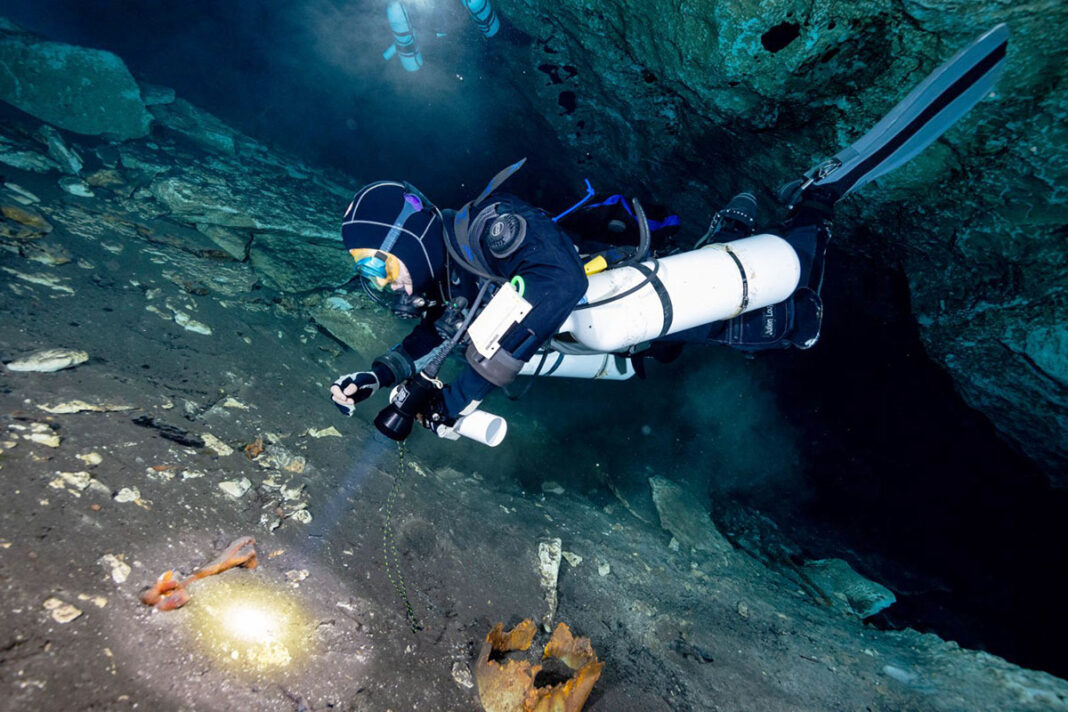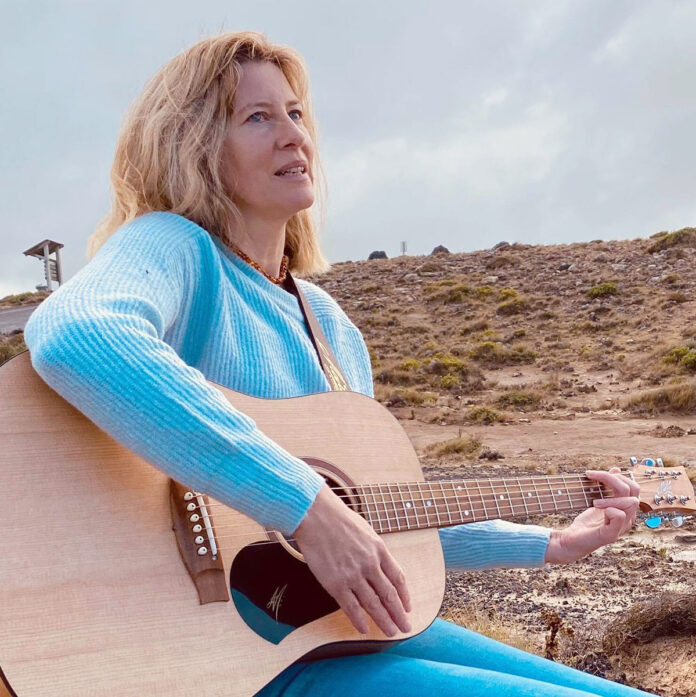Brisbane’s Griffith University has teamed up with the Cave Divers Association of Australia (CDAA) to explore underwater caves in the South East in search of fossils from extinct mammals.
The three-year project is in collaboration with the South Australian Museum, University of Adelaide and the University of Queensland.
The group is looking for giant marsupials that went extinct around fifty thousand years ago including sthenurines (short-faced kangaroos), thylacoleo (marsupial lion), diprotodons (giant wombat-like mammals) and more recently extinct species such as the thylacine (the Tasmanian tiger).
During April, Griffith University palaeontologist and experienced diver Julien Louys took his first dive of the project into the Limestone Coast caves in search of the ancient megafauna.
Dr Louys said he was diving Fossil Cave also known as The Green Waterhole, Engelbrecht Cave, Gouldens Waterhole and hopefully Tank Cave in the future of the project.
“We have funding to essentially get out some of the fossil deposits that are preserved in the underwater caves around the Mount Gambier region,” he said.
“Fossils in these particular caves have been known about since the 1960s, essentially since people first started diving in these caves.
“There were some efforts at extracting some of the fossils in the late ‘80s and they got a huge amount of wonderful material, mainly of a group of mammals known as the sthenurines.
“These are known as the short-faced kangaroos, they are an extinct megafauna species and they ranged in size from around about the same size as modern kangaroos through to maybe as high as 2.5 metres tall and about 350 kilograms.
“Since that time there has been a number of developments both on the diving front as well as well as on the scientific front on the sorts of information that we can get out of these sorts of fossil deposits and fossil recoveries.”
Dr Louys said South East caves were unique in Australia for having significant ice age fossil deposits in underwater settings.
“I know of no other sites that have those sorts of deposits, it is absolutely unique and we do not really know how they got in there, why they got in there, why they are there and why they are not in other places,” he said.
“The idea behind this project is to go back into some of these caves and to try and get at some of that information.
“That information revolves around the context of the animals, so not just about the animals themselves but some of the things like how old the fossils are, how they got into the caves, what sorts of environments these megafauna were living in and what sort of species were around at the same time as the megafauna.
“One of the things that happened in the 1980s was there was a big focus on the big stuff, but there is also a huge amount of smaller species of mammals and birds and reptiles and things like that can also be found in these deposits.”
Dr Louys said they were ultimately looking to see what sort of environmental changes occurred during the ice ages in Australia called the Quaternary to determine what could have made these animals extinct.
“The ultimate reason we are doing that is because there was a massive extinction of quite a number of different fauna in Australia from the ice ages through to today,” he said.
“We can add information to the debate about what might have killed them off – whether it was humans, whether it was environmental change (or) whether it was a combination of the two.
“There were a lot of environmental changes that happened and whether those environmental changes could have potentially impacted on the distribution and extinction of some of these creatures.”
Dr Louys said one of the helpful differences between earlier extraction efforts over 40 years go and now was that he can explore the caves himself.
“I can actually go down with the cave divers and look at some of these deposits and look at trying to figure out what the best areas to excavate might be or to where we need to get this contextual information,” he said.
“Some of that is dating and we are going to try and get some DNA from some of the sediments, we are going to try and get that paleoenvironmental information through pollen data, so really collecting those samples and really trying to nail down the context before we actually start to disturb the sites any further.
“It is one thing for someone to be able to describe to you what they are seeing, but seeing it for yourself makes a huge difference.
“It is not that cave divers cannot recognise important fossil sites and things like that, but after working in the field for 15 years, there are little subtle things that you notice that are very difficult to describe in words, but you know it when you see it.
“Hopefully we will have another trip next year and … be able to start some excavations.”




